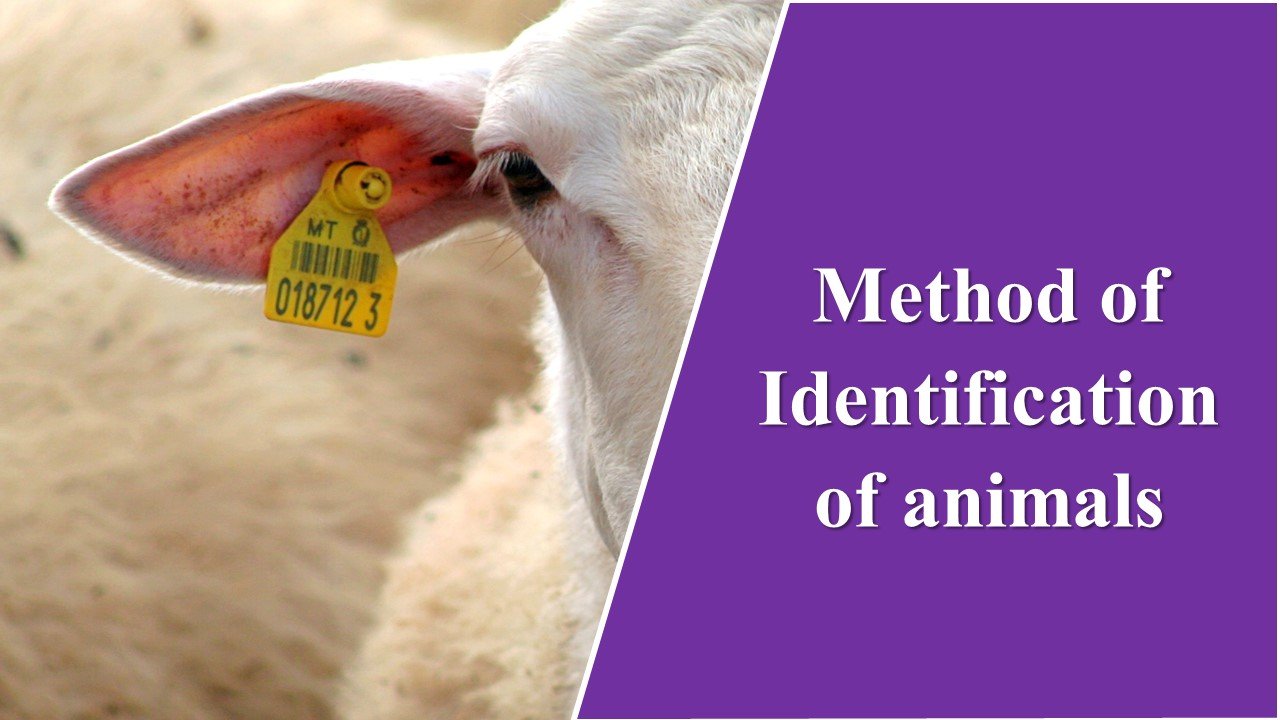Method of Identification of animals

Identification of animals is essential for several reasons. It helps in recognizing individual animals and resolving disputes when they are lost, stolen, or stray away. Proper identification also aids in maintaining accurate records, preventing mistakes by farmers, managers, and attendants. It is crucial for registering animals in herd books and for obtaining cattle insurance certificates. Additionally, identification is necessary when issuing various certificates, such as those for performance, diagnostic tests, artificial insemination (A.I.), and medico-legal cases. Lastly, it serves decorative or fancy purposes in some cases.
The procedure for identifying an animal should be simple and easy to implement. It should provide permanent and visible marks that are cost-effective and cause minimal damage to the animal’s hide. Additionally, the identification method should be resistant to theft and should not cause unnecessary pain or discomfort to the animal.
Methods of identification of animals
Permanent Marks
- Tattooing
- Notching
- Tagging
- Branding
Temporary Mark
- Neck straps with tags
- Neck chain
- Photographs
- Colouring and painting
Tattooing
This is used for marking cattle having light coloured ears. The tattooing set comprises a tattoo forcep, tattooing ink and a series of tattoo letters and figures. By the tattooing forcep the imprints of the letters and figures are made conveniently on the inner side of the animal’s ear avoiding the ear vein. Tattooing of calves may be done within a week after birth.
The part to be tattooed should be thoroughly rubbed and washed. Methylated spirit swab is applied to remove grease from the surface. Tattooing ink is liberally applied over the part. The desired number of figures are fixed in the forcep and it is firmly pressed on the ear surface followed by rubbing of some more ink into the tattooed punctures with the help of cotton swab.
Notching
In this method Y-shaped notches are made al specified places along the borders of ears by means of a pair of sharp scissiors, pincers, punching machine or by notcher
Tagging
Tagging is mostly used for young calves. Two types of tages are commonly used.
- Self-piercing type
- Non piercing type.
Metal tags or the plastic tags may be used for the purpose. Modern tag punches have a gauge to regulate the distance of the hole from the tags of the ear, that allows the ear to grow. Brisket tags, tail tags and tag straps may also be used as a temporary method of marking.
Branding
This is the common method of marking and identification in dairy cattle. Three months to 12 months of age is a suitable time for branding of a calf. It involves branding a number, letter or design or combination of these on the skin with a hot iron or a chemical. Hot branding is the most common method of branding and identifying animals in India. The branding is done on the hip region of the animal.
Hot Branding
Hot branding is accomplished by placing a bright-red heated brand iron firmly against the body area for a few seconds. It causes partial burning of tissue and causes a permanent scar of the identical shape.
Freeze Branding
Freeze branding is one of the most promising and permanent methods of identification. It causes less pain to the animal, less hide damage and improved legibility. It is a good method of identification on black skin, as on buffaloes. Liquid Nitrogen (-320°F) is used as refrigerant.
Cold Branding
Cold branding iron selectively destroys the melanocytes or the pigment producing cells on the skin resulting in growth of white hair in the branded area. This method can also be used on white animals since a longer application of extreme cold will destroy the hair completely leaving the bare skin (brand). For this purpose branding irons are cooled in a mixture of dry ice and alcohol (95%) or on liquid nitrogen at a temperature of-79°C and are held on a clipped area of coloured skin (which has just been soaked with alcohol for about 30 seconds). Calves of 3- 12 months’ age may be freeze-branded.
Join Times of Agriculture
Get the latest Agriculture Magazine and regular important updates right on your phone.
👉 Join WhatsApp Group